Samsung Galaxy S20 Plus vs. Google Pixel 4 XL: Which phone is better?
Our Samsung Galaxy S20 Plus vs Google Pixel 4 XL face-off pits two of the top big-screen phones against each other to crown an Android champ
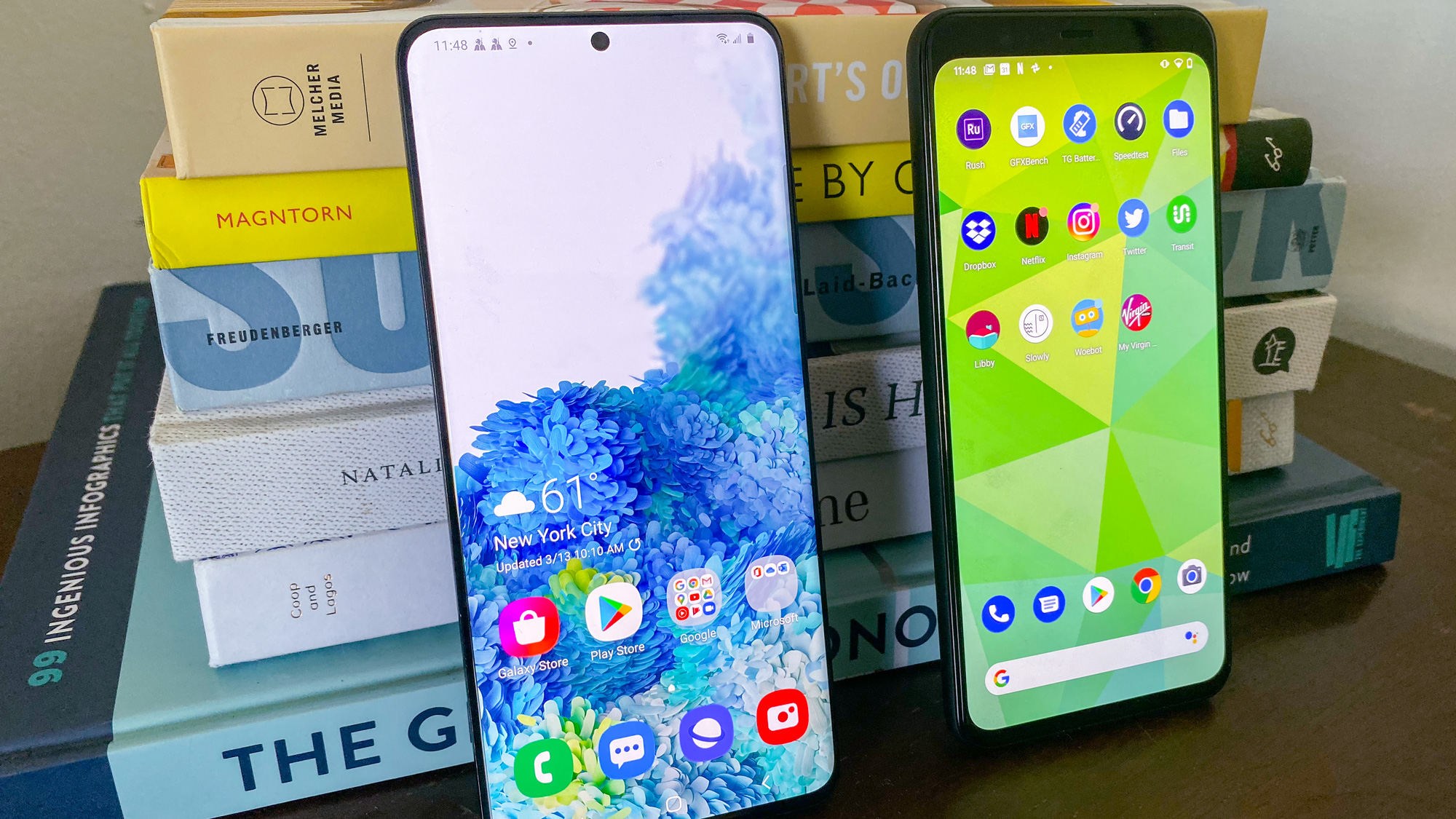
Samsung's Galaxy S20 lineup shows the phone maker is serious about taking on all comers for the title of best phone. And among its trio of new handsets, the Galaxy S20 Plus stands out, for packing in a lot of premium features without the Galaxy S20 Ultra's stratospheric price.
As you’ll see in our Galaxy S20 Plus review, Samsung’s phone features a top-of-the-line processor, 5G connectivity, a big 6.7-inch screen with a lightning fast refresh rate and four rear cameras that really improve upon previous Samsung smartphones. That last point is worth emphasizing, as Samsung flagships have fallen behind rival phones when it comes to cameras.
- The best Android phones you can buy
- Best phone battery life: The longest-lasting smartphones
Google's Pixel lineup has set the standard for mobile photography in recent years, and our Pixel 4 XL review demonstrates that Google continues that trend as one of the best camera phones available. To see whether Samsung's latest can finally surpass Google's flagship, we take a closer look at the Galaxy S20 Plus vs. the Pixel 4 XL to see which phone is better.
Galaxy S20 Plus vs. Pixel 4 XL: Specs
| Row 0 - Cell 0 | Samsung Galaxy S20 Plus | Google Pixel 4 XL |
| Starting price | $1,199 | $899 |
| Screen (Resolution) | 6.7-inch AMOLED (3200 x 1440) | 6.3-inch AMOLED (3040 x 1440) |
| CPU | Snapdragon 865 | Snapdragon 855 |
| RAM | 12GB | 6GB |
| Storage | 128GB, 512GB | 64GB, 128GB |
| microSD? | Yes, up to 1TB | No |
| Rear cameras | 12MP primary (f/1.8); 64MP telephoto with 3x lossless zoom (f/2.0); 12MP ultrawide (f/2.2); VGA time of flight | 12.2MP main (f/1.7); 16MP telephoto with 2x optical zoom (f/2.4) |
| Front camera | 10MP (f/2.2) | 8MP (f/2.0) |
| Battery size | 4,500 mAh | 3,700 mAh |
| Battery life (Hrs:Mins) | 10:31 | 9:42 |
| Size | 6.37 x 2.9 x 0.3 inches | 6.3 x 2.9 x 0.3 inches |
| Weight | 6.56 ounces | 6.8 ounces |
Galaxy S20 Plus vs. Pixel 4 XL: Price and availability
Get ready for some sticker shock when comparing the Galaxy S20 Plus to the Pixel 4 XL. Even though the Pixel 4 XL is Google's priciest phone at $899, that's still $300 less than the $1,199 you'd have to pay for a Galaxy S20 Plus. In fact, you could double the storage on the Pixel 4 XL to 128GB and you'd still pay the same $999 that Samsung charges for the smaller Galaxy S20.
Google's phones used to be hard to come by, but these days you'll find the Pixel 4 and Pixel 4 XL at every major carrier, just as you would the Galaxy S20 Plus. Google's phone is also optimized to work on the Google Fi wireless network.
Winner: Pixel 4 XL
Galaxy S20 Plus vs. Pixel 4 XL: Design
Google's Pixel lineup has never been a contender when it comes to beauty contests, and that's quite apparent when you look at the Galaxy S20 Plus vs. the Pixel 4 XL. Samsung's phone is sleek-looking with a screen that stretches from top to bottom. The Pixel 4 XL has a chunky bezel on the top of its display to house both the front camera and additional sensors, but it makes the phone seem pudgier than it actually is, especially when it's lying next to the S20.
Get instant access to breaking news, the hottest reviews, great deals and helpful tips.
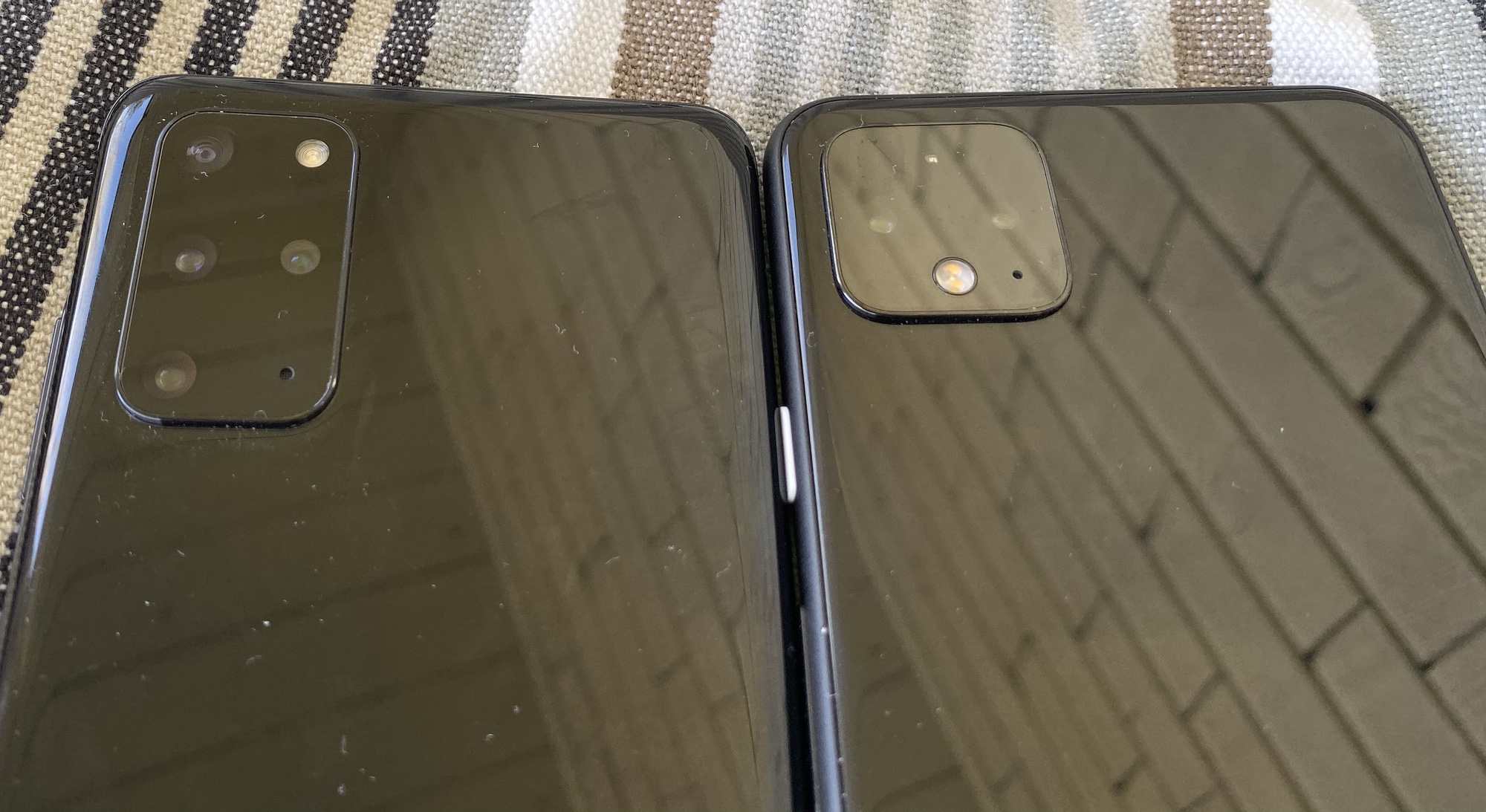
Flip the phones around, and they're pretty identical with matching glass backs and prominent camera arrays that stick out of the back. The Galaxy S20 Plus' camera array is a little more elongated to house the additional lenses.
Because the Galaxy S20 Plus uses a 20:9 aspect ratio, it can accomodate a larger screen than the Pixel 4 XL without tacking too much size. At 6.37 x 2.9 x 0.3 inches, the Galaxy S20 Plus is only fractionally taller than the 6.3 x 2.9 x 0.3-inch Pixel 4 XL. Samsung's phone is lighter, too — 6.56 ounces vs. 6.8 ounces for the Pixel 4.
Neither phone comes in a rainbow of colors. The Pixel 4 XL has an Oh So Orange variant, but that one's hard to find these days. Usually, you're left to choose between Just Black and Clearly White options. That's not much different from the Cloud Blue, Cosmic Gray and Cosmic Black versions of the Galaxy S20 Plus.
Winner: Galaxy S20 Plus
Galaxy S20 Plus vs. Pixel 4 XL: Display
The Galaxy S20 Plus would seem to enjoy a big edge over other smartphones with its display, as the 6.7-inch AMOLED panel features a 120Hz refresh rate. That's twice as fast as most smartphone screens, and when you're scrolling through web pages, the smoother experience is really noticeable and more enjoyable.

But the Pixel 4 XL mitigates that advantage somewhat with its own fast refresh rate. The Pixel 4 lineup features a 90Hz screen. While that's not as fast as what the Galaxy S20 offers, I put the two phones side by side and really couldn't spot an appreciable difference between the two refresh rates. Samsung also limits the 120Hz refresh rate to full HD resolution instead of the 3200 x 1440 native resolution that Galaxy S20 Plus is capable of.
Faster refresh rates aside, the Galaxy S20 Plus features more screen real estate than the 6.3-inch Pixel 4 XL, so that's going to appeal to more people who prefer a larger display for getting things done, playing games and watching videos. The Galaxy S20 Plus' panel is brighter, too, measuring 847 nits on a light meter. The Pixel 4 XL has a much dimmer screen — just 418 nits — and it's one of our biggest complaints about Google's phone.
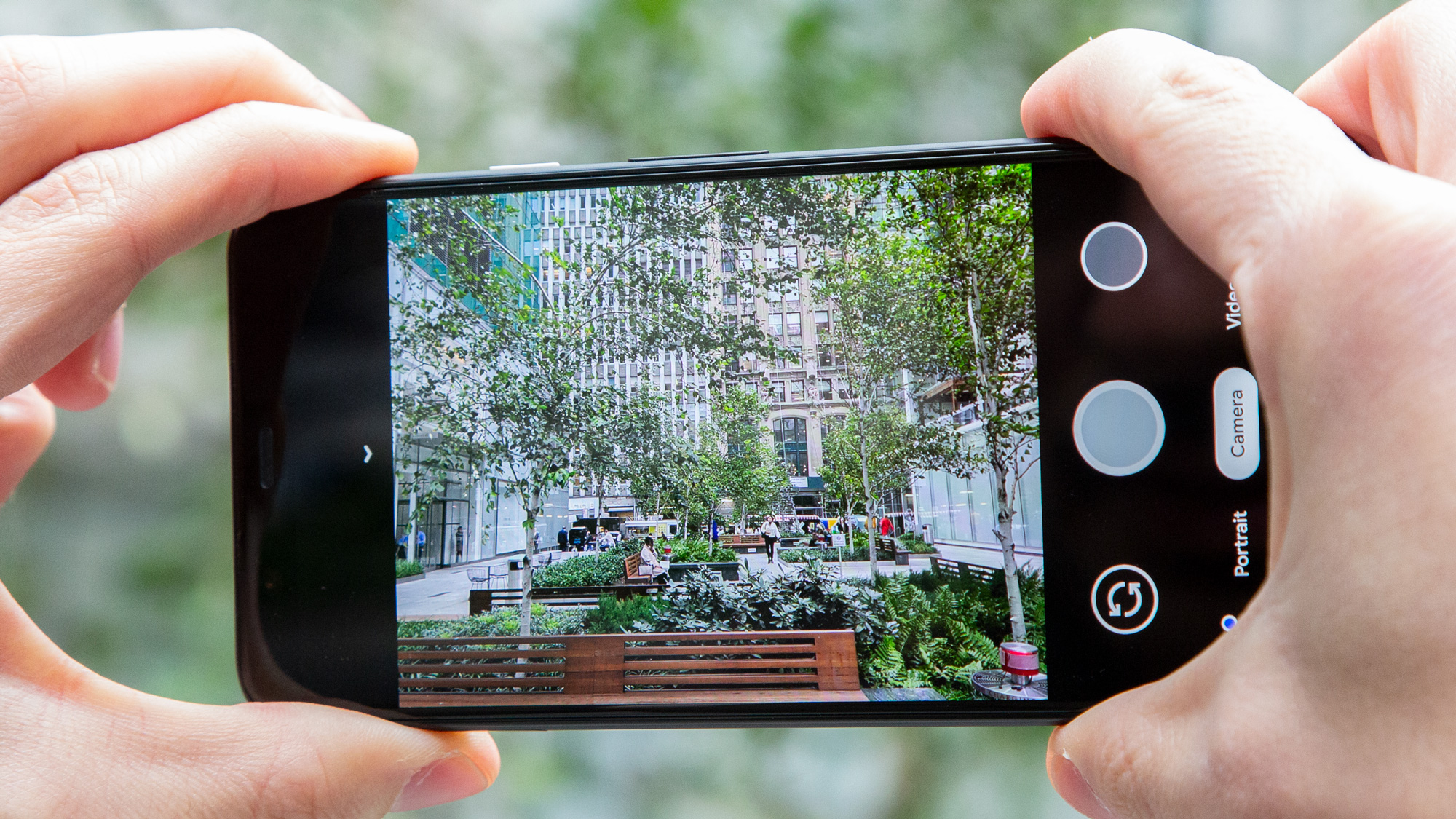
You'll see more vibrant colors on the Galaxy S20 Plus' screen, as Samsung's phone captures 224.4% of the sRGB color spectrum. The Pixel 4 XL captures a more modest 131.7%, but its colors are more accurate. The Pixel 4 XL’s panel has a Delta-E rating of 0.36 compared to 0.38 for the Galaxy S20 Plus. (Numbers closer to zero are better.)
Winner: Galaxy S20 Plus
Galaxy S20 Plus vs. Pixel 4 XL: Cameras
Both the Galaxy S20 Plus and Pixel 4 XL make mobile photograph their centerpiece feature, though the phones go about things in different ways. Google added a second camera to the back of its Pixel 4 phones — a 16MP telephoto lens joins the 12MP main shooter on the 4 XL — but software-powered computational photography remains the star of the show. Samsung's cameras turn to software smarts too to help with image processing, but the Galaxy S20 Plus puts its photographic muscle into hardware. There are four rear cameras on the S20 Plus — a 12MP primary lens, a 64MP telephoto lens, a 12MP ultrawide shooter and VGA time-of-flight sensor.
That telephoto lens on the Galaxy S20 Plus is particularly noteworthy, as it can support a 3x lossless zoom. The Pixel 4 XL's telephoto lens has a 2x optical zoom, giving Samsung an edge on paper when it comes to shooting from a distance.
Take this landscape shot taken across the San Leandro Channel from downtown Oakland. There's little separating the two photos, though I think the Galaxy S20 Plus did a better job punching up the blue in the sky. The Pixel 4 XL's photo is probably more true-to-life, even if it looks a little muted next to the S20's shot.
Those differences become starker once we zoom in. The more colorful tone of the Galaxy S20 Plus' photo is more pronounced using an 8x zoom, and Samsung's phone does a better job keeping individual buildings in sharp focus. The Pixel 4 XL's shot is all right, but some of the buildings around Oakland's Tribune Tower are getting a little fuzzy. As a result, that tower pops out in the S20's shot, adding more depth to this Oakland skyline view.

The Pixel 4 XL's Super Res Zoom feature tops out at 8x, but because of the 64MP telephoto lens, the Galaxy S20 Plus can keep zooming. I've included a 10x shoot of the Tribune Tower here, because that provides more detail than the 8x photo without sacrificing too much in the way of focus. I could zoom in as much as 30x, though unless your S20 is on a tripod, you're going to get a much blurrier shot.
Because the S20 Plus has an ultrawide lens, you can also pull out to capture more of the background — particularly helpful in landscape shots. You don't have that option with the two-lens Pixel 4, so give Samsung's camera phone credit for greater flexibility.
Moving indoors, the Pixel 4 XL does a slightly better job at capturing a bowl of pasta. While both photos are fairly identical, I think the Pixel 4 balances the contrasting colors — the red of the meat sauce verus the green of the garnish. The wine glass in the background is also more distinct in the Pixel 4 XL's photo, whereas the S20 Plus has a harder time showing off the contours of the glass.
Google's phones have typically done a great job in low light, so I was pleasantly surprised by how the Galaxy S20 Plus outperformed the Pixel 4 XL when things got dark. I lit some candles in my fireplace, turned down the lights and snapped some photos. The S20 Plus' shot features warm colors and a good balance of shadows. Some may think that yellow cast of that photo is too excessive, but I prefer it to the white, almost washed-out look of the Pixel 4 XL's photo.
To test out night mode on the respective phones, I arranged some plastic miniature baseball helmets in a pitch-black basement workshop. The Pixel 4 XL's effort remains a little too dark — you can see the helmets clearly enough, but not any of the items on the shelves in the background. That's not an issue with the well-light Galaxy S20 Plus photo, though that camera got overly aggressive in processing the color of the wooden shelves; they're not that reddish in real life.
I think the portrait effects on the Pixel 4 XL are more impressive than what the S20 Plus produces, even if Samsung's phone has a time-of-flight sensor that can help enhance things like a bokeh effect blur. The Pixel 4 does a better job knowing where my daughter ends and the backdrop begins, even managing to keep strands of her hair in focus that the S20 Plus decides to blur. Both cameras are too aggressive with skin-smoothing, as my daughter has freckles on her nose, though you wouldn't know it unless you really stared at either shot.
Overly smooth skin remains a problem when we switch to the front cameras on both phones — a 10MP shooter on the Galaxy S20 Plus vs. the Pixel 4 XL's 8MP selfie cam. Neither phone captured the ravages of time that are quite present on my face in real life, and the tone of the S20 Plus's self-portrait doesn't look natural at all. That said, I prefer the way the Galaxy S20 crops its selfies, as there's too much head-room in the Pixel 4 XL's shot.
Winner: Galaxy S20 Plus
Galaxy S20 Plus vs. Pixel 4 XL: Performance
Any comparison between a new Galaxy S20 model and one of last year's top Android phones like the Pixel 4 XL isn't really a fair fight. That's because the Pixel 4 XL runs on a Snapdragon 855 process, while the Galaxy S20 Plus is one of the first phones with Qualcomm's newer Snapdragon 865 chipset.
A new mobile system-on-chip usually ushers in performance improvements (among other features), and the Snapdragon 865 is no exception, with Qualcomm promising a 25% boost for the chipset's processor along with 25% faster graphics rendering. Samsung augments that with 12GB of RAM in the Galaxy S20 Plus. (In fact, all Galaxy S20 models feature 12 GB of RAM, and Galaxy S20 Ultra owners have the option of upgrading to 16GB.)

Our test numbers confirm the advantage the Galaxy S20 Plus brings to this fight with the Pixel 4 XL. On Geekbench 5, which measures overall performance, the Galaxy S20 Plus posted a multi-core score of 3,076. That's one of the best results we've ever seen for an Android phone, and certainly far ahead of the 2,582 for the Pixel 4 XL. It's the same story in graphics testing, where the S20 Plus' score of 7.061 on 3DMark SlingShot Extreme Open GL test trounced the 5,806 result that the Pixel 4 XL produced.
It was our real world test that best illustrated the Galaxy S20 Plus' performance edge. We had both phones transcode a 4K video to 1080p after applying an effect and transition in Adobe Rush. The Pixel 4 XL took 1 minute, 31 seconds to complete the task — a pretty typical result for a Snapdragon 855-powered phone. The Galaxy S20 Plus shaved 18 seconds off that time. It may not sound like much, but it's indicative of how the Galaxy 20 Plus handles things faster than last year's top Android phones.
Winner: Galaxy S20 Plus
Galaxy S20 Plus vs. Pixel 4 XL: Battery life
Battery life is another area where the older Pixel 4 lineup takes a backseat to the latest from Samsung. It's a battle that all comes down to battery size — Samsung has chosen to put a big power pack inside its flagship phones, while Google has not.
In the case of the Pixel 4 XL, there's a 3,700 mAh battery to keep the phone charged up. That pales in comparison to the Galaxy S20 Plus' 4,500 mAh. And the results in our battery test reflect that disparity in battery sizes. In our test where we have the phones surf the web continuously over T-Mobile's cellular network, the Pixel 4 lasted 9 hours and 42 minutes. The S20 Plus' bigger battery helped it last more than 45 minutes longer, at 10 hours and 31 minutes.
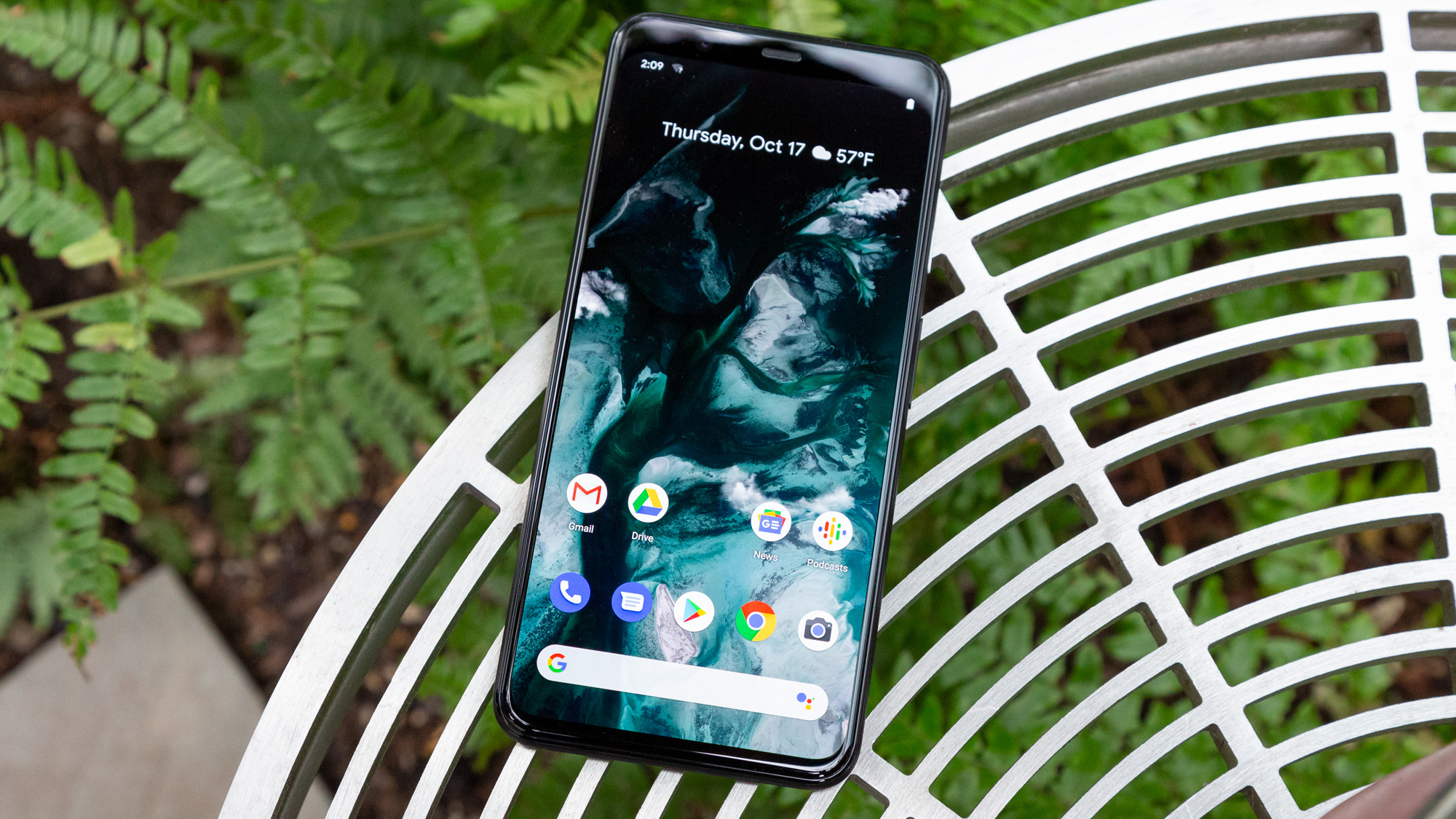
Note that the result we saw with the Galaxy S20 Plus was with the screen refresh rate set to 60Hz. Enabling the faster 120Hz refresh rate placed a serious hit on the S20 Plus' battery life, as the phone lasted an average of 8 hours and 55 minutes. Our Pixel 4 XL result comes with the 90Hz refresh rate turned on.
The Pixel 4 XL comes with an 18-watt charger, while the Galaxy S20 Plus features a faster 25-watt charger in its box. That impacts charging times, as we got a fully drained Galaxy S20 Plus back up to 55% after 30 minutes of charging. The Pixel 4 XL got to just 43%. You can charge both Google and Samsung phones wirelessly.
Winner: Galaxy S20 Plus
Galaxy S20 Plus vs. Pixel 4 XL: Software and special features
Both the Galaxy S20 and Pixel 4 XL run Android 10, the latest version of Google's mobile operating system. In the case of the Galaxy S20, that version of Android is adorned with Samsung's OneUI 2.0 skin, which is designed to make the phablet easier to operate with one hand. Pixel owners get a more pure Android experience and the promise that they'll be first in line when Android 11 arrives later this year. Samsung tends to stagger its OS updates, with availability also depending upon your carrier.
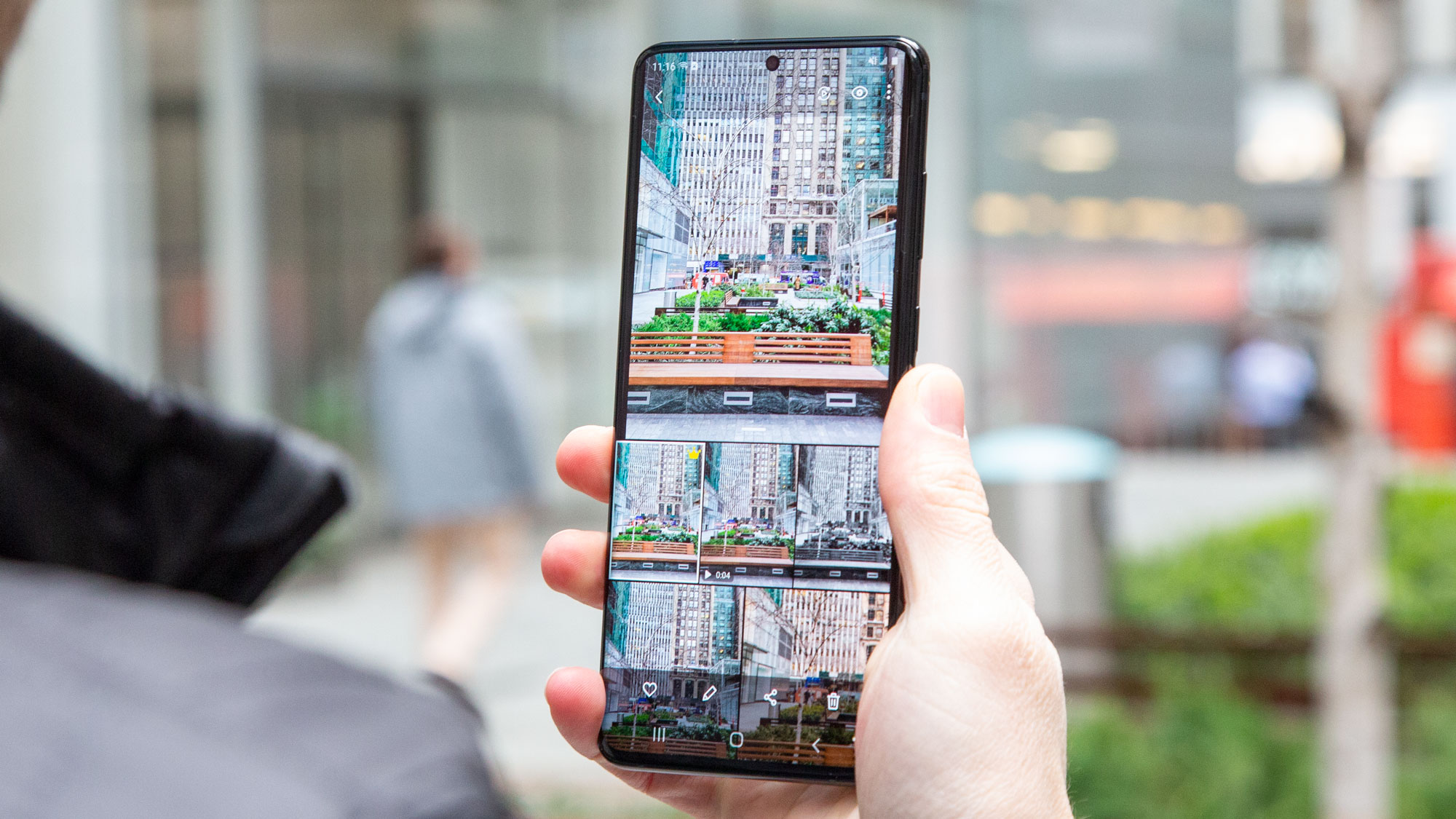
Google bakes more special features into its phone. The Pixel 4 and 4 XL introduced us to Motion Sense, which uses a radar sensor to help detect gestures. Some of Motion Sense's features, like controlling song playback with a swipe of your hand, are of limited use. But Motion Sense can also detect when you're about to pick up your phone, waking it up faster and speeding up the unlocking process.
The standout feature in the Pixel 4 XL is the Recorder app, thanks to a live transcription feature that turns your recordings into text in real-time. You're also able to search for specific words and phrases in recordings. It's surprisingly accurate, and a great example of how Google can leverage its expertise with machine learning and language recognition to create a real productivity booster.
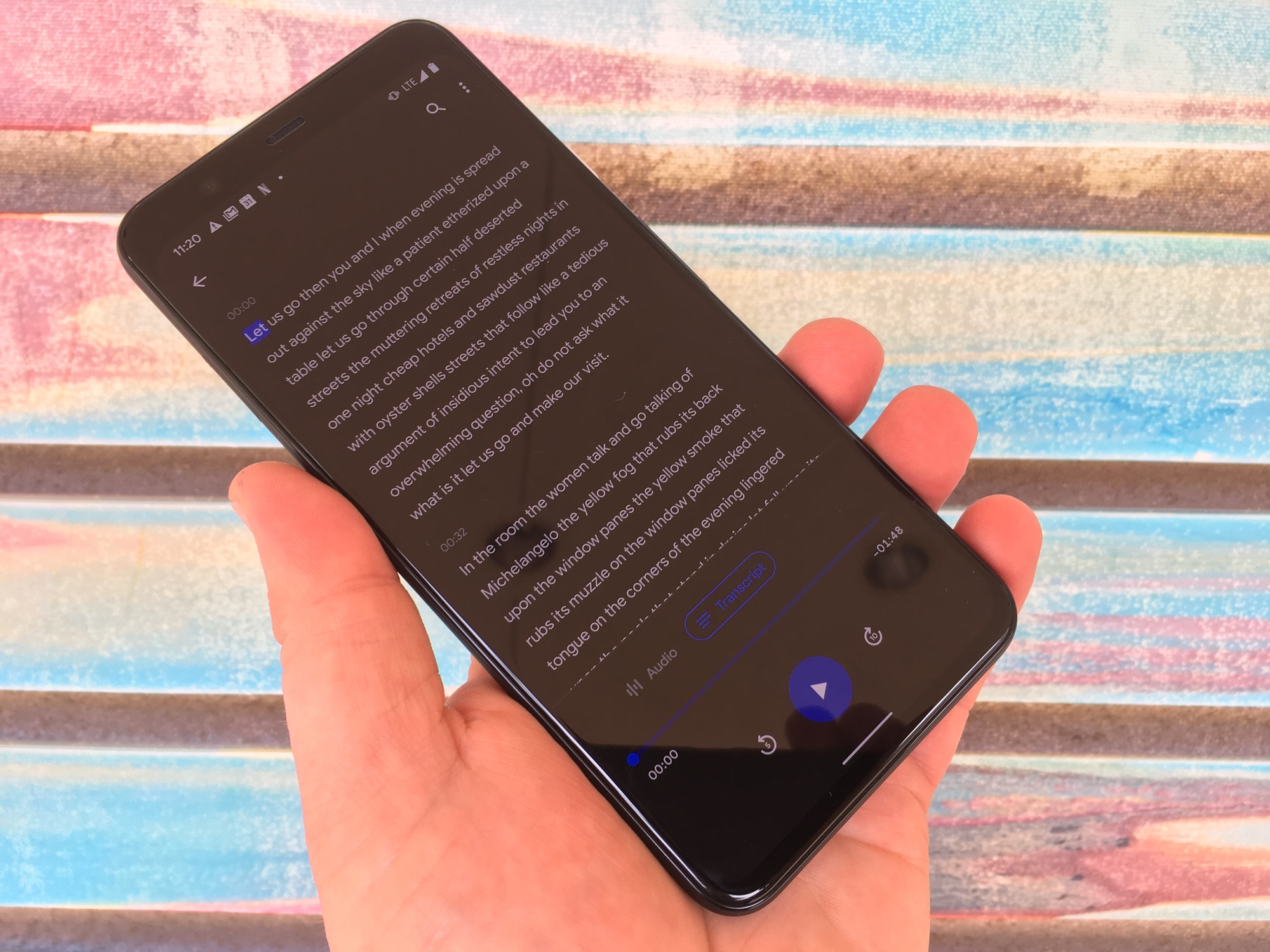
The Galaxy S20 Plus has a few tricks of its own up its sleeve, but one of them — integration with Google Duo — mimics a feature available to Pixel users. Galaxy S20 owners can also turn to Music Share if they want to share their Bluetooth connection so other people in a car can control music playback.
There's one Galaxy S20 Plus feature the Pixel can't match, and that's 5G connectivity. Samsung's new phones can connect to faster 5G networks — at least where those networks are available. 5G support won't be available in Google's phones until the Pixel 5 later this fall.
Winner: Pixel 4 XL
Galaxy S20 Plus vs. Pixel 4 XL: The winner
A Galaxy S20 Plus vs. Pixel 4 XL showdown doesn’t end up being close. As good as Google’s phone is — and it’s one of the better Android phones you can buy — the Galaxy S20 Plus outperforms it in the areas that matter to most people.
| Row 0 - Cell 0 | Samsung Galaxy S20 Plus | Google Pixel 4 XL |
| Price and availability (10 points) | 6 | 8 |
| Design (10 points) | 9 | 7 |
| Display (15 points) | 14 | 12 |
| Cameras (20 points) | 18 | 17 |
| Performance (15 points) | 14 | 12 |
| Battery life (20 points) | 17 | 14 |
| Software and special features (10 points) | 7 | 8 |
| Overall (100 points) | 85 | 78 |
The Galaxy S20 Plus looks better, performs better and lasts longer. Google used to enjoy a big edge in mobile photography, but the Galaxy S20 Plus didn’t just close that gap — it surpasses the Pixel 4 XL in picture quality in some cases, thanks to the hardware improvements Samsung has introduced.
Price-conscious shoppers are going to balk at paying the Galaxy S20 Plus’ $1,199 asking price, and there’s something to be said for the pure Android experience that a Pixel phone delivers — particularly when Google includes features like the impressive Recorder app. But the Galaxy S20 Plus is the better phone overall.
Philip Michaels is a Managing Editor at Tom's Guide. He's been covering personal technology since 1999 and was in the building when Steve Jobs showed off the iPhone for the first time. He's been evaluating smartphones since that first iPhone debuted in 2007, and he's been following phone carriers and smartphone plans since 2015. He has strong opinions about Apple, the Oakland Athletics, old movies and proper butchery techniques. Follow him at @PhilipMichaels.

